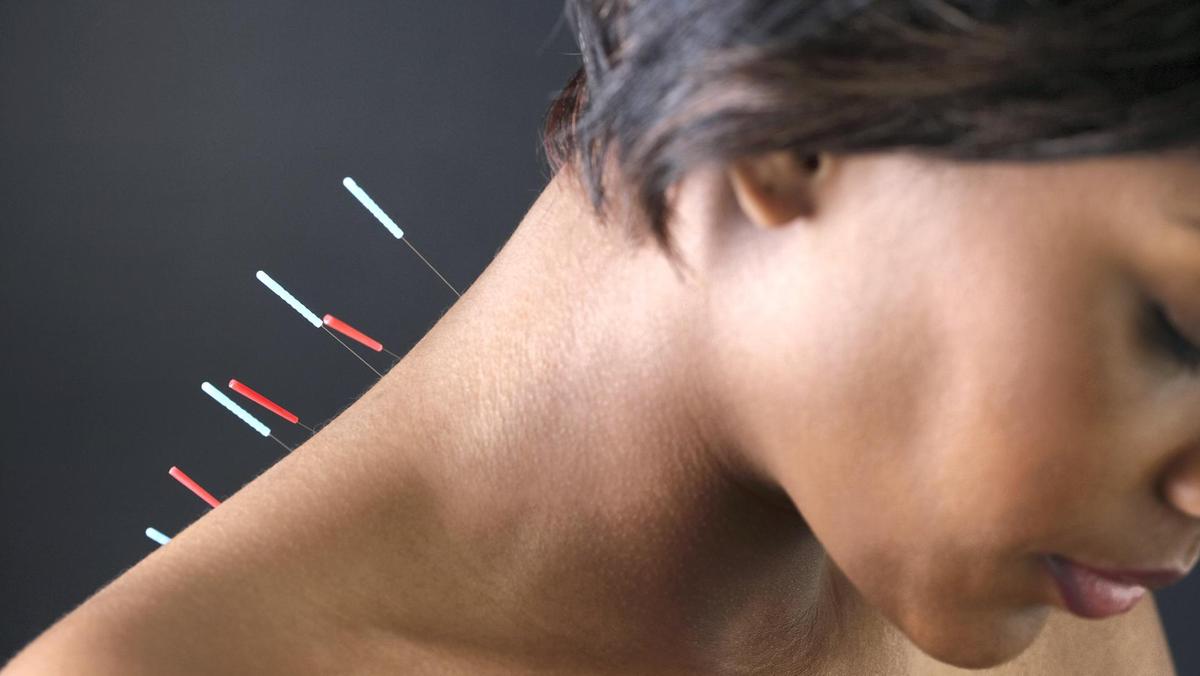Dry Needling For Effective Soft Tissue Management
We consider ourselves to be the most professional & thorough practitioners while importantly offering a range of comprehensive treatments for our many clients. This means we offer many services which others don’t. One of these is soft tissue dry needling. Many people confuse soft tissue dry needling and Acupuncture. Both techniques use filament needles however their clinical indications vastly differ. Dry needling is a gentle and fast treatment for muscular and soft tissue problems. It’s used by allied health professionals to reduce pain, muscle spasm, tightness and trigger points. Acupuncture is based on the premise that overall health is determined by a balance flow of Chi as described by ancient Chinese therapy. According to Chinese therapy, Chi circulates throughout the body along pathways which are referred to as meridians. Acupuncture is therefore a treatment designed to improve the overall health and wellbeing of the body.
How Does Soft Tissue Dry Needling Work?
Soft tissue dry needling is utilized by professionals such as Chiropractors, Physiotherapist’s and Myotherapist’s to treat muscular aches, pains and dysfunction. Soft tissue dry needling is specifically used to target myofascial trigger points. A myofascial trigger point is an irritable band or nodule within muscle and soft tissues. A trigger point is essentially an overactive, tight area within a muscle (i.e “knot”). Myofascial trigger points may occur for a variety of reasons including:- Direct trauma to muscle.
- Strain/Sprain type injuries.
- Prolonged limb immobilisation which may contract or shorten the associated muscles.
- Overuse or repetitive type activities or occupations.
- Postural stress.
How Is Dry Needling Performed?
Your therapist requires direct access to the skin of the relevant region for treatment. Please be assured that the practitioners at Vitality Chiropractic Australia respect your privacy and we do not ask clients to unnecessarily undress. If you’re experiencing lower back pain you will be asked to lie face down on the table and to raise your clothing to the middle of your thoracic spine. This will enable your therapist access to your lumbar spine musculature and associated soft tissue. Your therapist will determine the specific myofascial trigger points which require soft tissue dry needling. The therapist will insert the small filament needle into the taut fibre where it will remain until the muscle demonstrates that it has relaxed in tension. Filament needs typically remain in place for 3 to 5 minutes. While this is taking place your therapist may work on other areas of your body.Application Of Dry Needling
Given soft tissue dry needling focuses on myofascial trigger points the technique can be used on virtually any condition which involves muscular dysfunction. Below we’ve included a brief list of the most common clinical presentations which we encounter in our practice:- Headaches & Migraines
- Carpal Tunnel Syndrome
- Postural stress
- Whiplash
- Lower back pain
- Neck pain
- Sciatica
- Tendon injuries
- Adhesive Capsulitis (Frozen Shoulder)
- Compartment Syndrome
- Golfer’s Elbow & Tennis Elbow
- Heel Spur & associated foot problems such as Plantar Fasciitis
- Rotator Cuff Syndrome & Shoulder Impingement Syndrome
